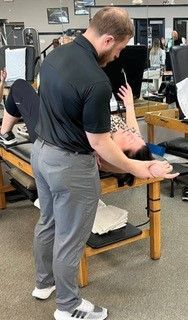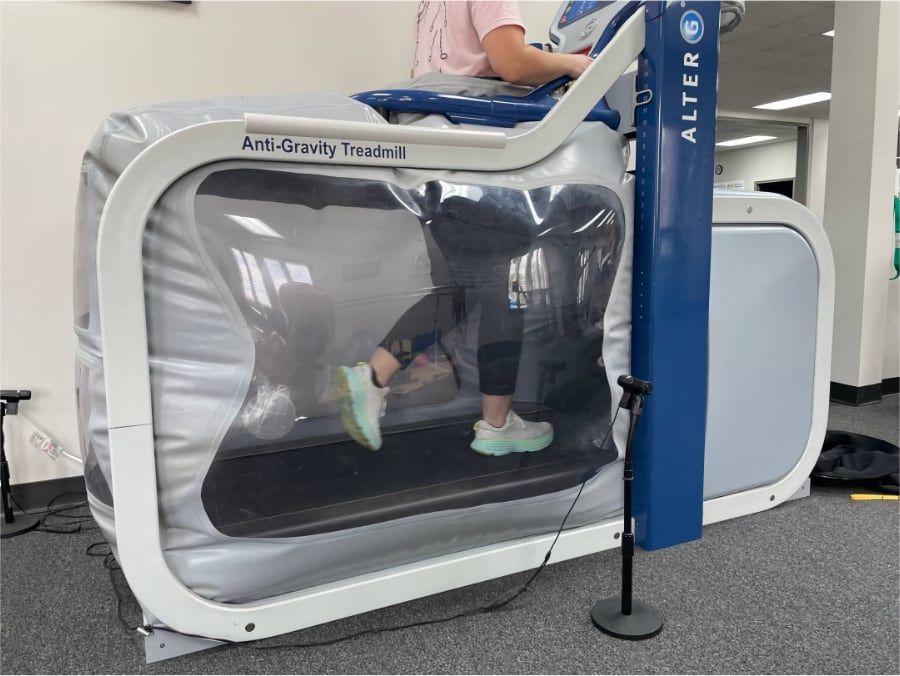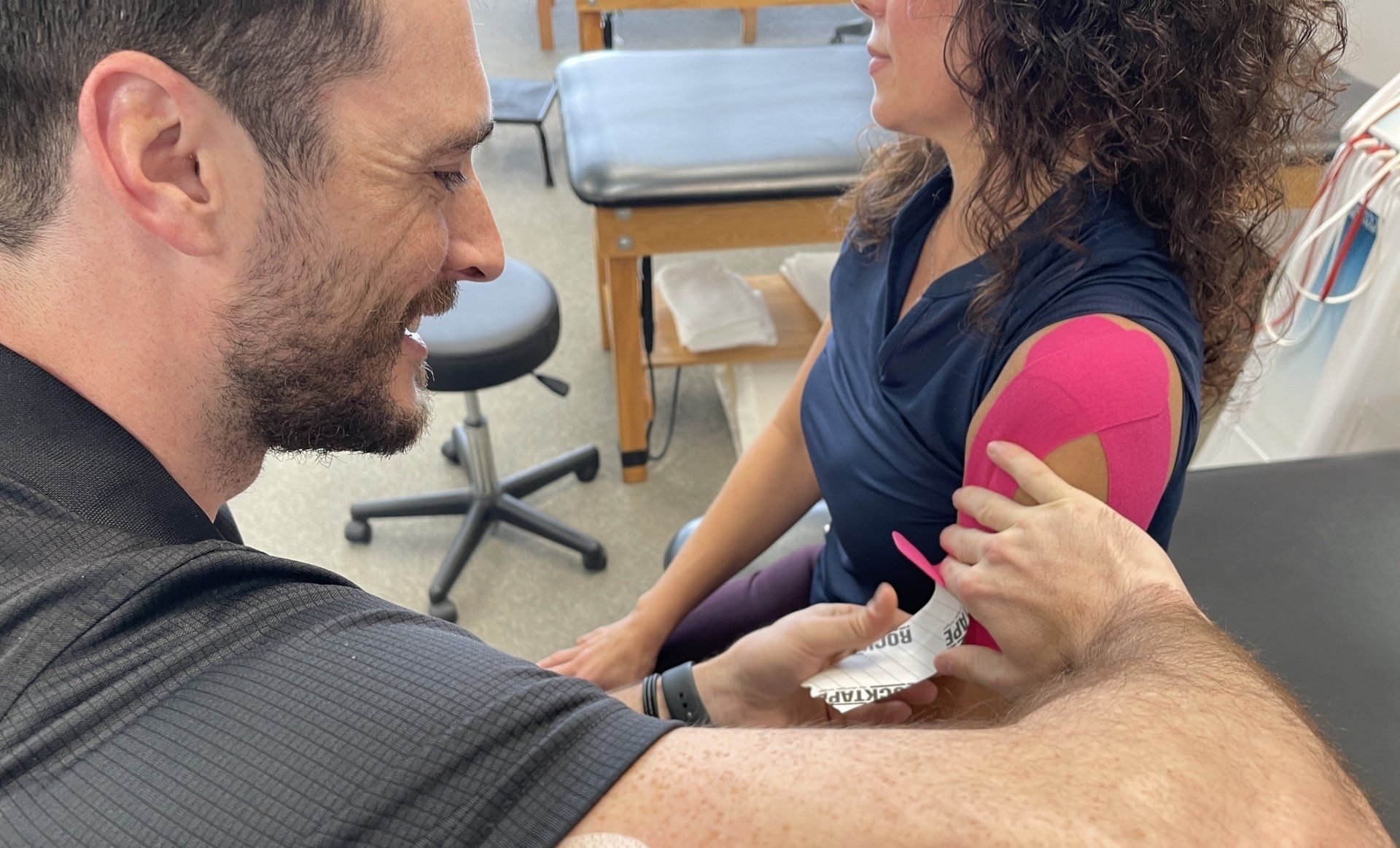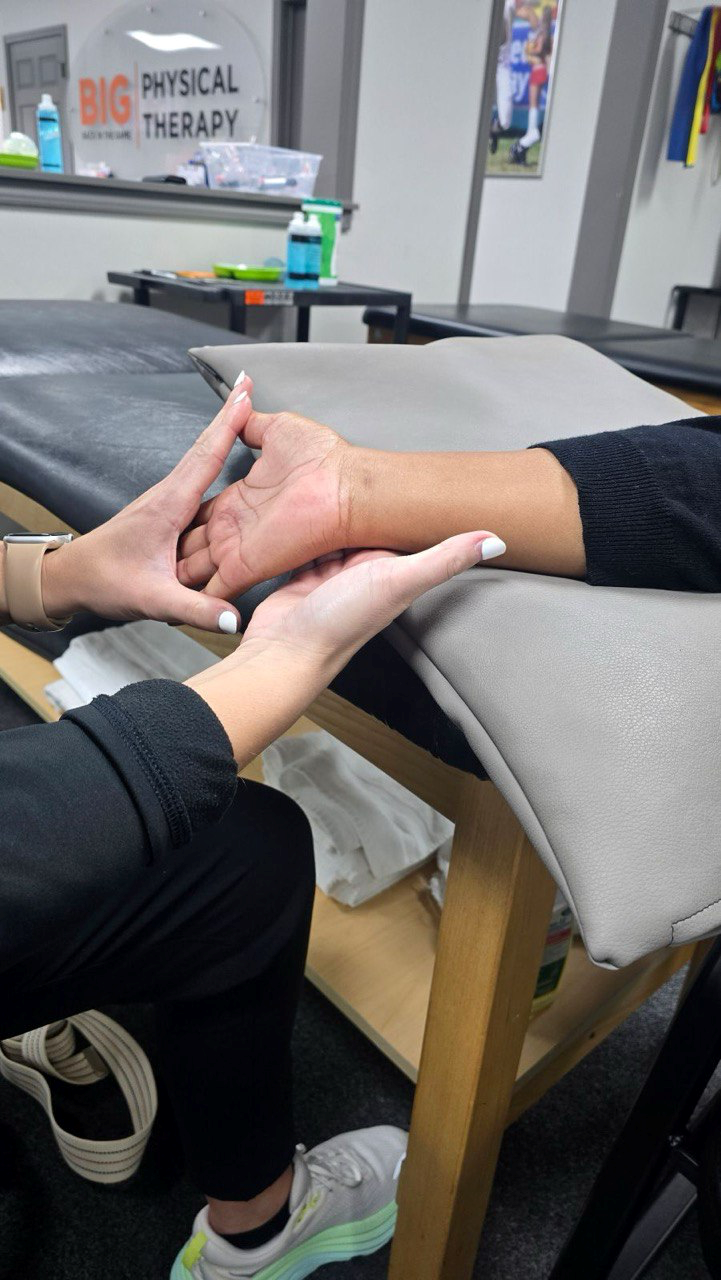Physical Therapy Services
Where Does It Hurt?
Who We Are
Resources
Differences Between a Pinched Nerve and a Pulled Muscle
Written By: Nate Zakrzewski
If you have ever dedicated yourself to a sport, you have probably seen (or even experienced) pulled muscles. Likewise, have you experienced a pinched nerve? Do you know how that feels? Often, a pinched nerve can occur from sitting, and if you have ever worked in an office, you might know someone who has dealt with a pinched nerve.
What are these conditions, exactly, and how do they compare to each other?
They both could stem from too much exertion or from normal movement, but their onset, development, and treatment vary in important ways.
Below, you’ll find a guide to walk you through the essentials to understand a pinched nerve vs a pulled muscle and everything you can do to help yourself regardless of which condition plagues you.
If you think you might be dealing with a sprain or a tear, check out
this guide.

What Is a Pinched Nerve?
A pinched nerve is a medical condition where tissues compress a nerve. They can happen in any area of the body, but when tissues press too hard on a nerve, it creates issues and symptoms that often need treatment.
This pressure can limit mobility, create numbness, and even cause pain (with back pain providing notable difficulty).
Pinched nerves can vary in severity and last for many different periods of time. Some compression is acute and easily treated. Other pinched nerves create chronic issues with challenging treatment courses.
Common Symptoms
Because pinched nerves directly impact the part of your body responsible for physical feeling, they come with a range of symptoms.
The most common symptoms include numbness, weakness, and pain.
Pinched nerve pain could be sharp, aching, burning, or a combination of these feelings, and regardless of the type of pain, it typically radiates out from the affected nerve.
Other symptoms include a loss of feeling in the area, tingling, pins and needles, or feeling as though a part of your body has ‘fallen asleep.’
What Is a Pulled Muscle?
A pulled muscle is a common term for a medical condition where the muscle and/or tendon tissues are stretched too far. Such stressing can lead to injury which ranges in severity.
In medical terms, pulled muscles are typically classified as strains, although the most severe cases might constitute something like a complete tear.
In a light case, the tissues are stretched and may exhibit pain or reduced functionality until their elasticity can return them to normal (often a matter of minutes or hours). In mild to moderate cases, a pulled muscle involves small tears. Those can create stronger symptoms and take longer to heal.
The most extreme cases constitute a complete tear and may require direct medical intervention.
Common Symptoms
The most common symptom associated with pulled muscles is pain. Alongside pain, you might experience tenderness, bruising, redness, limited motion, swelling, muscle weakness, and/or muscle spasms. Keep in mind that any combination of these symptoms could stem from a pulled muscle.
The extent of the symptoms depend on the severity of the condition. For instance, pain associated with a pulled muscle can range from very mild to excruciating.
How to Treat Pinched Nerve vs Pulled Muscle
Understanding the differences between a pinched nerve vs a pulled muscle helps, but it’s still important to cover the different treatments for each medical condition.
Since both conditions often stem from overuse or overexertion, you will see some crossover treatments. For instance, changing the activity and relieving the overstressed tissue is usually a good idea.
That said, the application of the treatments looks quite different. For instance, surgical intervention could be prescribed to treat either issue, but the nature of the two surgeries is completely different.
With all of that in mind, here is what you can expect in terms of treatment, depending on whether you have a pinched nerve or a pulled muscle.
Pinched Nerve Treatment
When suffering from a pinched nerve, the leading treatment prescription is changing your activity to produce less load on the area. Typically, if you can successfully unload the tissues that press on your pinched nerve, they will return to a healthier, previous state, and the problem resolves.
In some cases, a pinched nerve cannot self-resolve. Medical intervention usually starts with nonsteroidal anti-inflammatory drugs (NSAIDs). Reducing inflammation can lower compression to resolve a pinched nerve.
Early intervention often involves physical therapy. By training tissues your body can relieve pressure and remedy the internal stresses that compress your nerve.
Lastly, surgery is an option. The majority of pinched nerves do not require surgical intervention, but some cases are best treated this way.
Dry needling, Shockwave Therapy, Class 4 Laser, Manual therapy and targeted excise is often used to help with promoting healing to the area of the pinched nerve.
Pulled Muscle Treatment
Though a pulled muscle constitutes a different root cause, many of the treatments look similar.
For any mild pulled muscle, you can often resolve the issue at home. Start with changing your activity, and avoid additional strain on the affected muscle until it heals. Often, patients combine ice, elevation, and/or compression with your change of activity treatment. These additional elements can speed up the recovery process and lessen pain.
When that isn’t enough, escalate to NSAIDs (per MD discretion and guidance) to help the inflammation that often comes with a pulled muscle.
Stretching and light exercise can also help your body naturally fight inflammation and work out the issue.
Direct medical intervention usually revolves around physical therapy. By strengthening the right muscles and muscle groups, you can overcome muscle strain and help prevent future strains.
Manual therapy might be paired with physical therapy for improved results. The hands-on approach can speed up recovery times and especially helps jump-start mobility after an injury.
In rare cases, surgery is necessary to repair the torn tissue. Usually physical therapy can make a big difference in the healing of strained muscles.
If you think you suffer from either condition, or if you have unrelated pain or health issues, we want to help. You can contact us to explore treatment options and get schedules for a consultation. We're looking forward to hearing from you, and remember that relief is just around the corner.
About the Author
Nate Zakrzewski
PT, DPT
Specialties: Orthopedic injuries, Sports Injuries, Post-operative surgical rehabilitation
Certifications: Dry Needling
Location(s): Dacula, GA
Contact
Request an appointment






